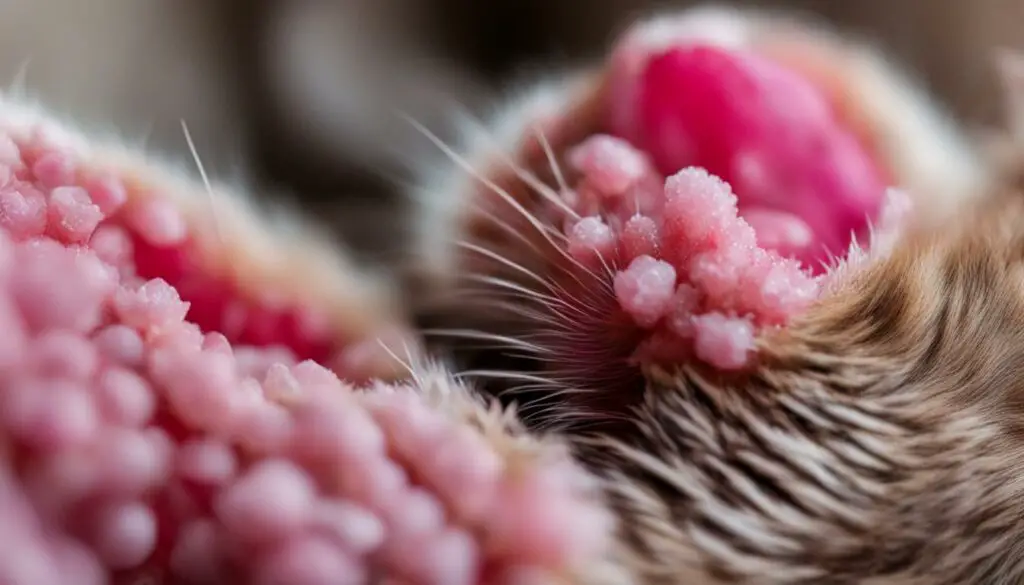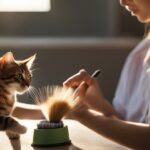Cats are known for their grooming habits, but if you’ve noticed your cat licking its paws excessively, you may be wondering why. While some paw licking is normal, excessive licking could be a sign of an underlying issue. In this article, we’ll explore the reasons why cats lick their paws frequently and provide possible solutions to help your furry friend.
Key Takeaways:
- Excessive paw licking can indicate an underlying issue in cats.
- Normal licking is a part of a cat’s grooming behavior.
- Compulsive licking may be a sign of anxiety, stress, or other health problems.
- Visiting a veterinarian is recommended if your cat is excessively licking its paws.
- Proper paw care and providing appropriate scratching surfaces can help prevent excessive licking.
Is It Normal for My Cat to Lick?
Cats grooming themselves through licking is a common and natural behavior. It’s their way of keeping their fur clean and free from dirt, debris, and odors. It’s also a method they use to distribute their natural oils and maintain their coat’s health and shine. So, if you notice your cat licking itself on a regular basis, there’s likely nothing to worry about.
However, excessive licking can be a cause for concern. If your cat is constantly licking its paws or other areas of its body, it could be a sign of an underlying issue. This behavior may indicate discomfort, pain, allergies, or skin problems. It’s important to pay attention to any changes in your cat’s grooming habits and consult a veterinarian if necessary.
Stress can also play a role in excessive licking. Cats may resort to grooming as a way to calm themselves down when they are feeling anxious or stressed. If you suspect that stress is the cause of your cat’s excessive licking, try to identify any potential stressors in its environment and take steps to create a calm and soothing atmosphere for your feline friend.
| Grooming Behavior | Health Concerns |
|---|---|
| Normal grooming to keep fur clean and free from dirt | Allergies causing itching and skin irritation |
| Distributes natural oils for a healthy coat | Pain or discomfort in specific areas of the body |
| Calming behavior in times of stress | Skin infections or parasites |
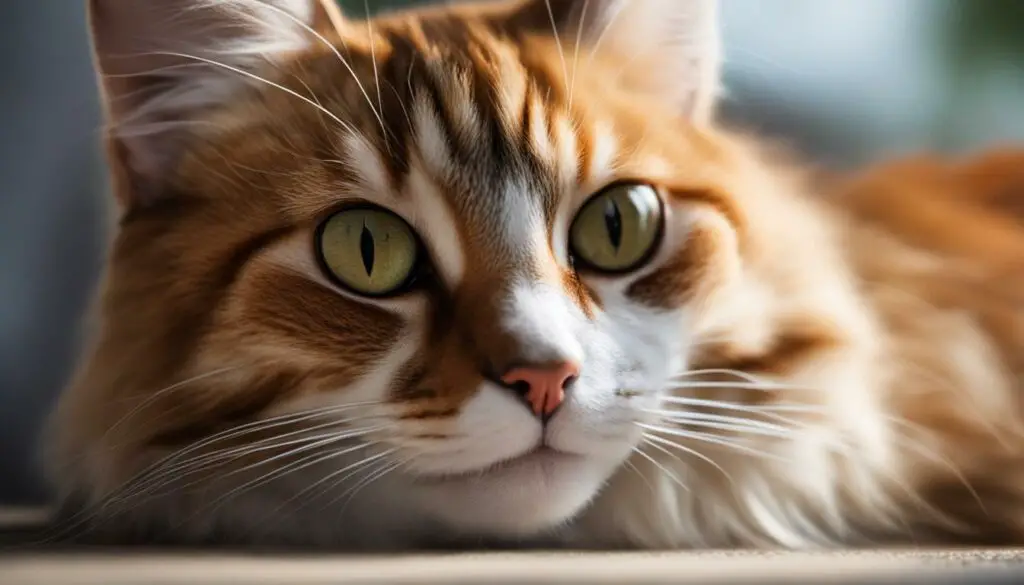
Excessive licking can be a sign of an underlying issue and should not be ignored. It’s essential to monitor your cat’s grooming habits, observe any changes, and seek veterinary advice if needed. Remember, a happy and healthy cat is a well-groomed cat!
What is Normal vs. Excessive Licking?
Licking is a natural behavior for cats, but it can become excessive and compulsive in certain situations. Understanding the difference between normal and excessive licking is crucial for identifying and addressing potential issues. Normal licking is usually even and focused on general grooming, while excessive licking is often repetitive, intense, and focused on a particular area, such as the paws.
Excessive licking can be a sign of feline compulsive behavior, which is often triggered by stress, anxiety, or underlying health issues. If your cat is obsessively licking its paws, it’s important to take action to stop the behavior and address the root cause. Here are some steps you can take to help stop your cat from licking its paws excessively:
- Provide environmental enrichment – Ensure your cat has plenty of toys, scratching posts, and interactive playtime to keep them mentally stimulated and reduce stress.
- Address any underlying medical conditions – If your cat’s excessive licking is due to an underlying health issue, such as allergies or skin infections, consult with your veterinarian to identify and treat the problem.
- Try behavior modification techniques – Redirect your cat’s attention away from licking by engaging them in alternative activities, such as interactive play sessions or puzzle toys.
- Use deterrents – Apply bitter-tasting sprays or use physical barriers, such as bandages or protective covers, to discourage your cat from licking its paws.
Remember, every cat is unique, and what works for one may not work for another. If your cat’s excessive licking persists or worsens despite your efforts, it’s recommended to seek professional advice from a veterinarian or a certified animal behaviorist.
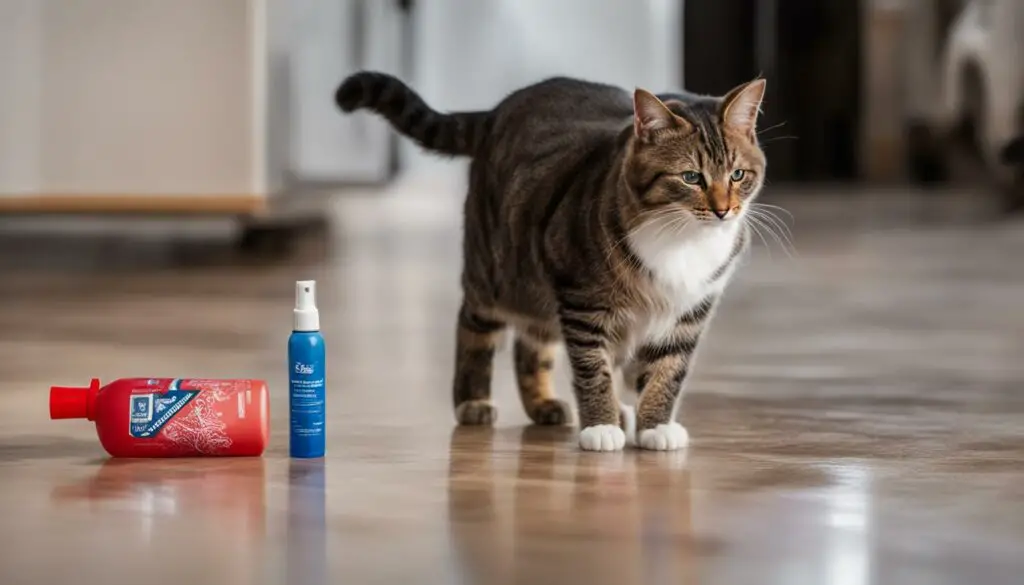
Table: Common Causes and Solutions for Excessive Cat Licking
| Causes | Solutions |
|---|---|
| Stress or anxiety | Environmental enrichment, behavior modification techniques, calming supplements or medications |
| Allergies | Identify and eliminate allergens, provide hypoallergenic diet, allergy medications |
| Skin infections | Antibiotics, topical treatments, regular grooming and cleaning |
| Parasites | Regular parasite prevention, deworming medications, thorough cleaning of the environment |
| Feline compulsive behavior | Behavior modification techniques, environmental enrichment, medications prescribed by a veterinarian |
Should I Go To The Vet For a Cat That Licks Too Much?
If your cat is excessively licking its paws, it’s recommended to visit a veterinarian. While some paw licking is normal behavior for cats, excessive licking can be a sign of underlying issues that require medical attention. A vet will be able to evaluate your cat’s behavior and health to determine the cause of the excessive licking.
There are several common reasons why cats excessively lick their paws. Allergies, such as food allergies or allergies to environmental factors like dust or pollen, can cause itching and lead to excessive licking. Parasites, such as fleas or mites, can also cause irritation and trigger excessive grooming. Infections, like bacterial or fungal infections, can also be a culprit. Additionally, stress or anxiety can manifest in cats through excessive grooming, including paw licking.
Proper paw care is essential in managing excessive licking. Regular grooming, including brushing your cat’s coat and trimming their nails, can help prevent over-grooming and alleviate the need for excessive licking. Providing appropriate scratching surfaces, such as scratching posts or mats, can also help redirect their grooming behavior. Ensuring a clean and stress-free environment for your cat can also help minimize their need for excessive grooming.
| Common Reasons for Cat Paw Licking | Cat Paw Care Tips |
|---|---|
| Allergies | – Consult with a veterinarian to identify and manage any potential allergies – Keep your cat’s living environment clean and free from potential allergens |
| Parasites | – Use regular flea and tick prevention measures – Keep your cat’s living space clean and regularly check for signs of infestation |
| Infections | – Seek veterinary treatment for any suspected infections – Follow your vet’s instructions for proper care and medication administration |
| Stress or Anxiety | – Create a calm and predictable environment for your cat – Provide plenty of toys and mental stimulation to help alleviate stress |
By addressing the underlying cause and providing proper care, you can help reduce your cat’s excessive paw licking and improve their overall well-being. However, it’s important to consult with a veterinarian to ensure an accurate diagnosis and appropriate treatment plan for your furry friend.
Why is Your Cat Losing Fur? Exploring the Possible Causes
Losing fur is a common concern for cat owners, and understanding the reasons behind it is essential for proper care. There are various factors that can contribute to cat fur loss, from normal shedding to underlying health conditions. In this section, we will delve into the potential causes of cat fur loss, providing insights to help you identify and address the issue.
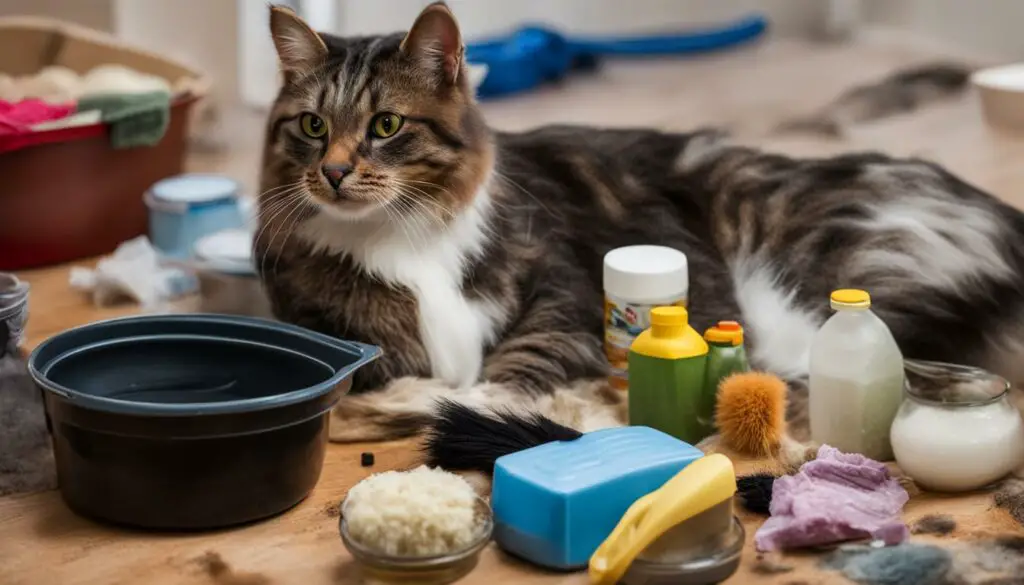
Key Takeaways:
- Normal shedding is a natural process, but excessive shedding may indicate health problems.
- Stress can trigger excessive shedding and fur loss in cats.
- Allergies, such as food allergies or flea allergies, can cause fur loss in cats.
- Parasites like fleas, ticks, and mites can lead to itching, inflammation, and fur loss.
- Certain health conditions, such as hyperthyroidism or ringworm, can contribute to cat fur loss.
Decoding Your Cat’s Coat: Normal Shedding vs. Red Flags
Shedding is a natural process for cats, and it plays a vital role in maintaining their coat health. However, it’s essential to distinguish between normal shedding and abnormal hair loss to ensure your cat’s well-being. Normal shedding typically occurs during seasonal changes, and you may notice an increase in fur around your home. This shedding is a healthy process that helps cats get rid of old or damaged hair and make way for new growth.
On the other hand, abnormal hair loss can be a cause for concern. Excessive shedding, patchiness, and the appearance of bald spots can indicate potential health problems or allergies in your cat. If you notice any of these signs, it’s important to investigate further to determine the underlying cause. Consulting with a veterinarian can help identify any underlying health conditions and provide appropriate treatment.
To help differentiate between normal shedding and abnormal hair loss, you can observe your cat’s behavior and physical appearance. Regular grooming sessions can also be beneficial in monitoring the condition of your cat’s coat. Keep an eye out for any unusual changes such as excessive itching, redness, or sores on the skin, as these may indicate underlying issues.
Remember that every cat is unique, and shedding patterns can vary. Some breeds may shed more than others, while certain factors like stress or hormonal imbalances can contribute to increased shedding. By staying attentive and promptly addressing any concerns, you can ensure that your cat’s coat remains healthy and beautiful.
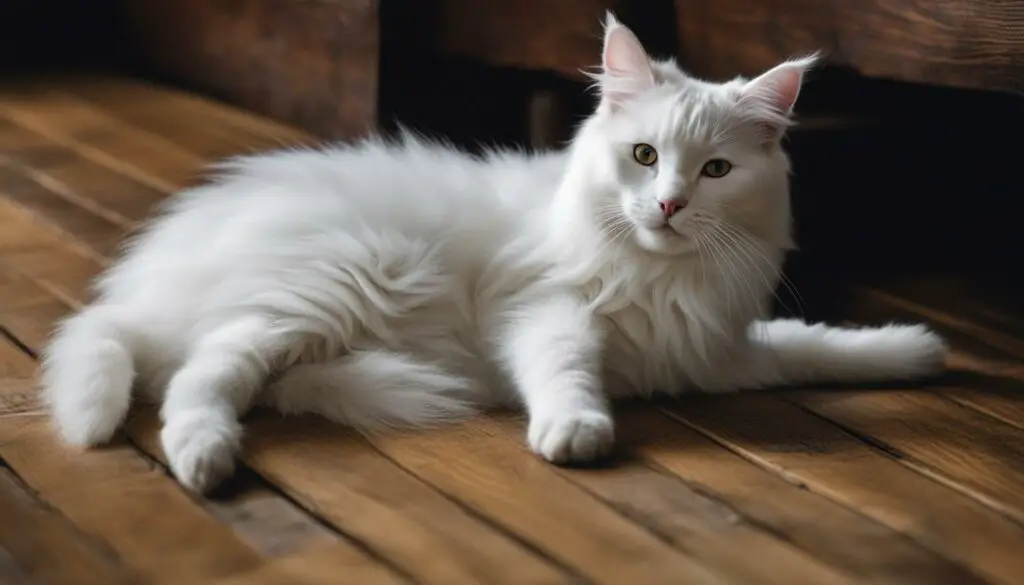
| Normal Shedding | Abnormal Hair Loss |
|---|---|
| Occurs during seasonal changes | Excessive shedding |
| Helps get rid of old or damaged hair | Patchiness and bald spots |
| Healthy and natural process | Sign of potential health problems or allergies |
| Regular grooming can help manage shedding | Consult a veterinarian for proper diagnosis and treatment |
Stress: The Silent Fur Snatcher
Stress can have a profound impact on our feline companions, often leading to various behavioral changes, including excessive licking and fur loss. Cats are sensitive creatures, and changes in their environment or routine can trigger stress, causing them to engage in over-grooming. Understanding and addressing stress-induced fur loss is crucial for the well-being of our beloved cats.
Stress-induced fur loss occurs when a cat begins to excessively groom itself due to heightened anxiety or unease. This behavior can lead to the removal of fur in certain areas, causing patchiness or bald spots to appear. It’s important to note that stress can manifest differently in each cat, and some may be more prone to over-grooming than others.
Stress-induced fur loss can be managed through de-stressification techniques that help alleviate anxiety and create a more soothing environment for your cat.
De-stressification Techniques for Cats
To help reduce stress-induced fur loss in your cat, consider implementing the following de-stressification techniques:
- Create a Safe Space: Provide your cat with a designated area where they can retreat and feel secure. This can be a cozy bed, a quiet room, or a specific corner of your home.
- Maintain a Consistent Routine: Cats thrive on routine, so try to establish a predictable schedule that includes regular feeding times, play sessions, and quiet time. This can help reduce anxiety and provide a sense of stability.
- Provide Mental and Physical Stimulation: Engage your cat in activities that promote mental and physical well-being, such as interactive toys, puzzle feeders, and scratching posts. This can help redirect their focus and alleviate stress.
By implementing these de-stressification techniques, you can help create a calm and peaceful environment for your cat, reducing the likelihood of stress-induced fur loss.
| De-stressification Techniques for Cats | Benefits |
|---|---|
| Create a Safe Space | Provides a secure retreat for your cat, reducing anxiety levels. |
| Maintain a Consistent Routine | Establishes stability and predictability, easing stress and promoting a sense of security. |
| Provide Mental and Physical Stimulation | Redirects your cat’s focus, reducing anxiety and promoting overall well-being. |
Remember, every cat is unique, and it may take time to find the most effective de-stressification techniques for your furry friend. If you’re concerned about your cat’s stress levels or excessive fur loss, consult with a veterinarian for personalized advice and support.
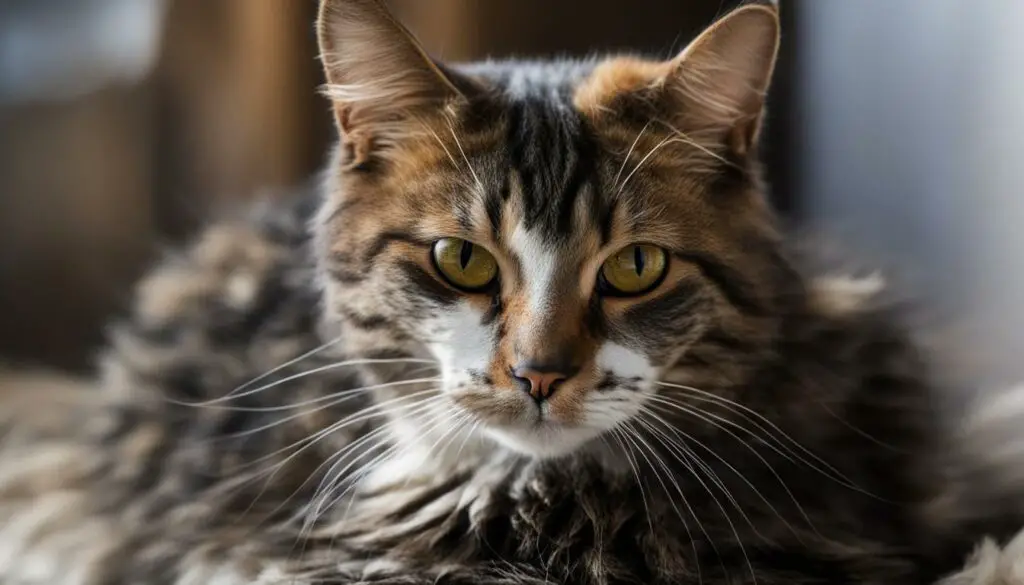
Allergies: The Itch You Can’t Scratch Enough
Allergies can be a common cause of excessive scratching and fur loss in cats. Just like humans, cats can develop allergies to certain substances, including food, environmental factors, and parasites. It’s important to recognize the symptoms of cat allergies and understand the triggers to effectively manage this condition.
Symptoms of Cat Allergies
Cat allergies can manifest in various ways, and it’s crucial to be aware of the common symptoms. Some of the signs that your cat may be experiencing allergies include:
- Excessive scratching, chewing, or licking of the skin
- Red, inflamed, or irritated skin
- Bald spots or patchy fur
- Sneezing, coughing, or wheezing
- Runny nose or watery eyes
- Vomiting or diarrhea
If you notice any of these symptoms in your cat, it’s best to consult a veterinarian for a proper diagnosis and treatment plan.
Allergy Triggers
Cats can be allergic to a wide range of substances. Some common allergy triggers include:
- Food: Certain ingredients in your cat’s diet can cause allergic reactions, such as grains, poultry, fish, or dairy products.
- Environmental Factors: Pollen, dust mites, mold, and household cleaning products can trigger allergies in cats.
- Parasites: Fleas, ticks, and mites can cause allergic reactions in cats, leading to excessive scratching and fur loss.
Identifying and avoiding these allergy triggers can help alleviate your cat’s symptoms and improve their quality of life.
| Allergy Triggers | Symptoms |
|---|---|
| Food | Grains, poultry, fish, dairy products |
| Environmental Factors | Pollen, dust mites, mold, household cleaning products |
| Parasites | Fleas, ticks, mites |
By understanding the symptoms of cat allergies and identifying the triggers, you can take the necessary steps to manage your cat’s allergies and provide them with the relief they need.
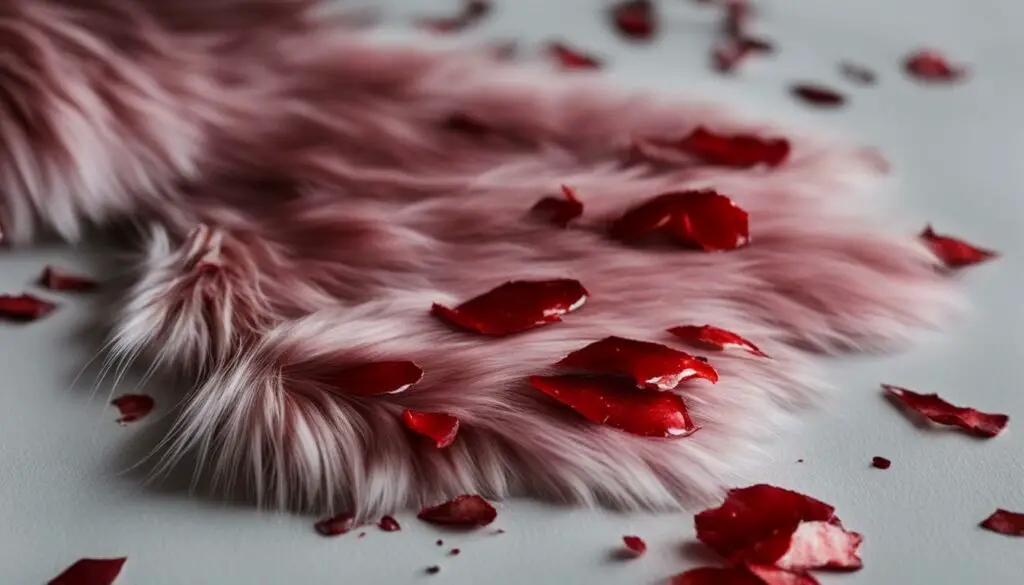
Pesky Parasites
One of the common reasons for excessive cat paw licking is the presence of pesky parasites. Fleas, ticks, and mites can invade your cat’s fur, causing itching, inflammation, and fur loss. Identifying the symptoms of parasite infestation is crucial in providing prompt treatment and relief for your furry friend.
| Parasite | Symptoms | Prevention |
|---|---|---|
| Fleas | Visible fleas, excessive scratching, tiny black specks (flea dirt) on the fur | Regular use of flea preventives, frequent grooming, and vacuuming of the home environment |
| Ticks | Visible ticks attached to the skin, swelling, inflammation, and redness at the site of the bite | Regular tick checks, use of tick preventives, and avoidance of tick-infested areas |
| Mites | Intense itching, hair loss, crusting or scabs on the skin, ear infections | Regular ear cleaning, use of mite preventives, and maintaining a clean living environment |
Preventing parasite infestations is crucial to keep your cat healthy and comfortable. Use appropriate flea and tick preventives recommended by your veterinarian, and regularly inspect your cat’s fur and skin for any signs of infestation. Regular grooming and cleanliness in your cat’s living environment also go a long way in minimizing the risk of parasites.
Remember, by taking proactive measures to prevent and address parasite infestations, you can help your cat avoid the discomfort and potential health issues associated with excessive paw licking.
Health Conditions
In addition to stress, allergies, and parasites, certain health conditions can contribute to cat fur loss. It is essential to be aware of these conditions and seek veterinary advice for proper diagnosis and treatment.
Hyperthyroidism
Hyperthyroidism is a common hormonal condition in cats, especially older cats. It occurs when the thyroid gland produces an excessive amount of thyroid hormone, leading to various symptoms, including weight loss, increased appetite, and excessive grooming. Cat fur loss can be a result of this condition, and it is crucial to consult a veterinarian for a proper diagnosis and management.
Ringworm
Ringworm is a fungal infection that affects the skin and hair of cats. It can cause hair loss, red and scaly patches, and itching. Ringworm is highly contagious and can spread to other pets and humans. If you suspect your cat has ringworm, it is essential to seek veterinary care for appropriate treatment and prevent the spread of the infection.
Hormonal Imbalances
Hormonal imbalances, such as those caused by adrenal gland disorders or reproductive issues, can also lead to cat fur loss. These imbalances can disrupt the normal hair growth cycle, resulting in excessive shedding or bald patches. Identifying and addressing the underlying hormonal issue is crucial for managing cat fur loss effectively.
Bacterial Infections
Bacterial infections, such as pyoderma or folliculitis, can cause cat fur loss and skin inflammation. These infections typically occur when bacteria enter the skin through wounds, scratches, or underlying skin conditions. Veterinary treatment, including topical or oral antibiotics, is necessary to resolve the infection and promote hair regrowth.
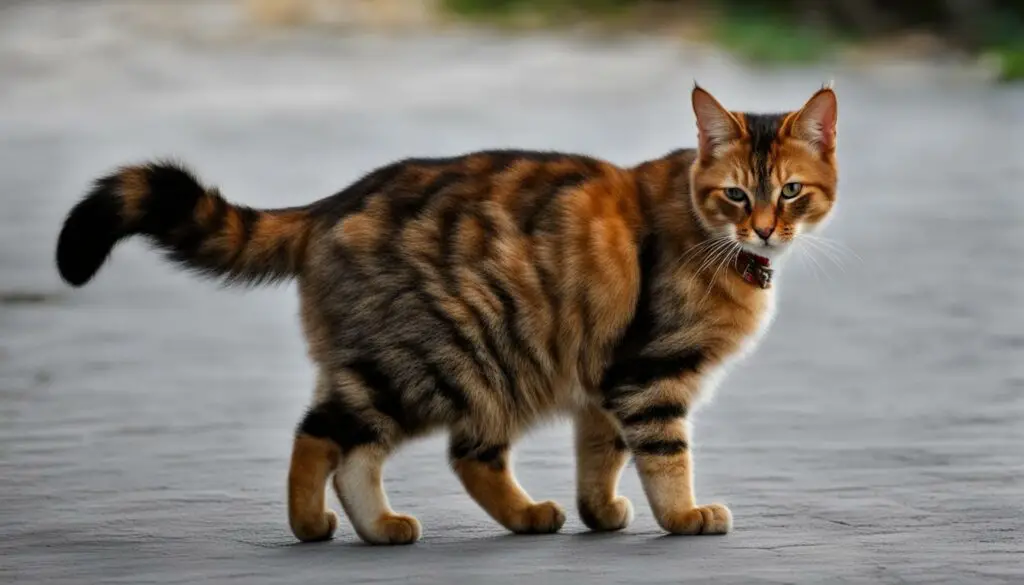
Understanding the potential health conditions associated with cat fur loss is essential for cat owners. Regular veterinary check-ups, proper grooming, and a balanced diet can help maintain your cat’s overall health and minimize the risk of these conditions. If you notice significant or persistent fur loss in your cat, consult with a veterinarian for a thorough examination and appropriate treatment.
Why Does My Cat Lick My Face? Unveiling the Reasons Behind this Behavior
Have you ever wondered why your cat insists on showering you with face licks? It may seem odd, but this behavior actually has several intriguing reasons behind it. In this section, I will delve into the fascinating world of cat face licking and explore the motivations behind this affectionate gesture.
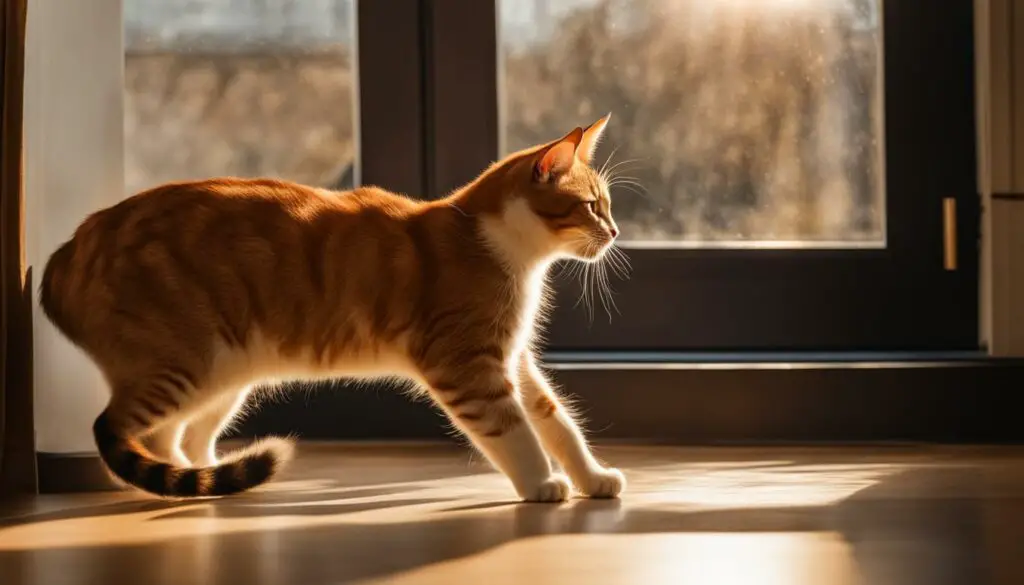
Key Takeaways:
- Cats lick their owners’ faces as a way to show affection and bond.
- Face licking is a natural behavior rooted in cats’ grooming instincts.
- It can also be a form of marking territory and including you in their family unit.
- Cats may lick your face to seek attention or to imitate grooming behavior.
- This behavior is a sign that your cat considers you part of their social circle.
Cats and Their Attention-Seeking Behavior
Cats are known for their independent nature, but they also have a strong desire for attention from their owners. Attention-seeking behavior in cats can manifest in various ways, and one common behavior is licking. When cats lick their owners, it can be a way of seeking attention and expressing their need for affection.
Why do cats lick to get attention? Licking serves as a way for cats to initiate interaction with their owners. It’s their way of saying, “Hey, I want your attention!” Cats may lick their owners’ faces or hands to get them to pet, play, or engage with them. They may also lick as a means of communication, letting their owners know that they are ready for some quality time together.
To fulfill their attention-seeking behavior, it’s important to respond to your cat’s requests for interaction. Spend quality time with your feline friend, offering petting sessions, playtime, and engaging toys. This can help satisfy their need for attention and strengthen the bond between you and your cat.
Cats Showing Affection Through Licking
When your cat licks your face, it’s not just a random behavior. It’s their way of expressing affection and bonding with you. Just like how cats groom each other to strengthen social bonds, licking their owners’ faces is a demonstration of love and acceptance. This behavior is rooted in their natural instinct to care for their family members, including humans.
Cat affection through licking can be seen as a sign that they consider you as part of their family unit. By grooming you, they are including you in their social circle and showing their trust and affection. It’s a way for them to say “I love you” in their own feline language.
While the act of being licked by your cat can be endearing, it’s important to note that excessive licking can still be a cause for concern. If your cat becomes obsessive in their licking behavior or starts to show signs of stress or anxiety, it’s worth consulting with a veterinarian to rule out any underlying health issues. But in most cases, when a cat licks your face, it’s simply a gesture of love and acceptance from your feline friend.
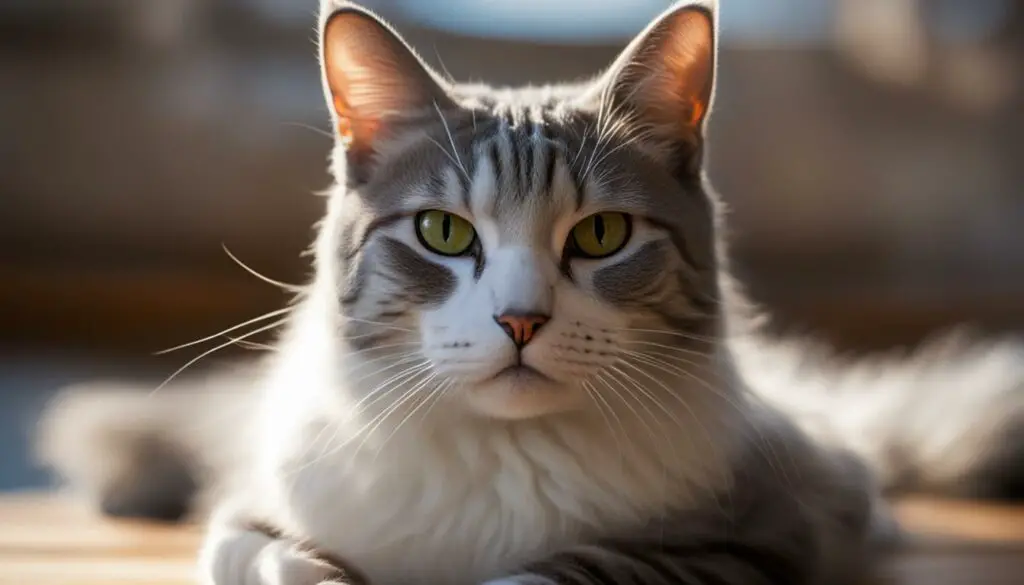
Overall, cats show affection through licking as a way to bond with their owners and include them in their social circle. It’s a display of love and acceptance, similar to how they groom other cats. So, if your cat ever gives you a gentle lick on the face, embrace it as a gesture of their affection and enjoy the special bond you share.
Cats Marking Territory by Licking
Cats have a unique way of marking their territory: by licking. This behavior is rooted in their instinctual need to communicate ownership and establish boundaries. When a cat licks their owner’s face, they are essentially claiming them as part of their family unit. By leaving their scent on their owner’s face, cats establish a sense of familiarity and security.
This marking behavior is not only a sign of territorial possession but also a display of trust and acceptance. When a cat chooses to lick their owner’s face, it’s a clear indication that they consider them a part of their close-knit circle. It’s a way for cats to show affection and strengthen their bond with their human companions.
“When a cat licks their owner’s face, they are essentially claiming them as part of their family unit.”
It’s important to note that not all cats will engage in this behavior. Each cat has their own unique personality and preferences when it comes to showing affection. While some cats may be more inclined to lick their owner’s face, others may choose different forms of affection, such as rubbing against their legs or purring softly.
| Pros of Cats Marking Territory by Licking | Cons of Cats Marking Territory by Licking |
|---|---|
|
|
As a cat owner, it’s essential to respect your cat’s boundaries and preferences. If you’re not comfortable with your cat licking your face, gently discourage the behavior and redirect their attention to other forms of affection. Providing alternative ways for your cat to express their love, such as interactive play sessions or treats, can help strengthen your bond without the need for face licking.
Overall, the act of cats marking territory by licking their owner’s face is a fascinating behavior that showcases their unique ways of communication and affection. It’s a reminder of the strong bond between cats and their human companions, built on trust, love, and the shared experience of being part of one another’s lives.
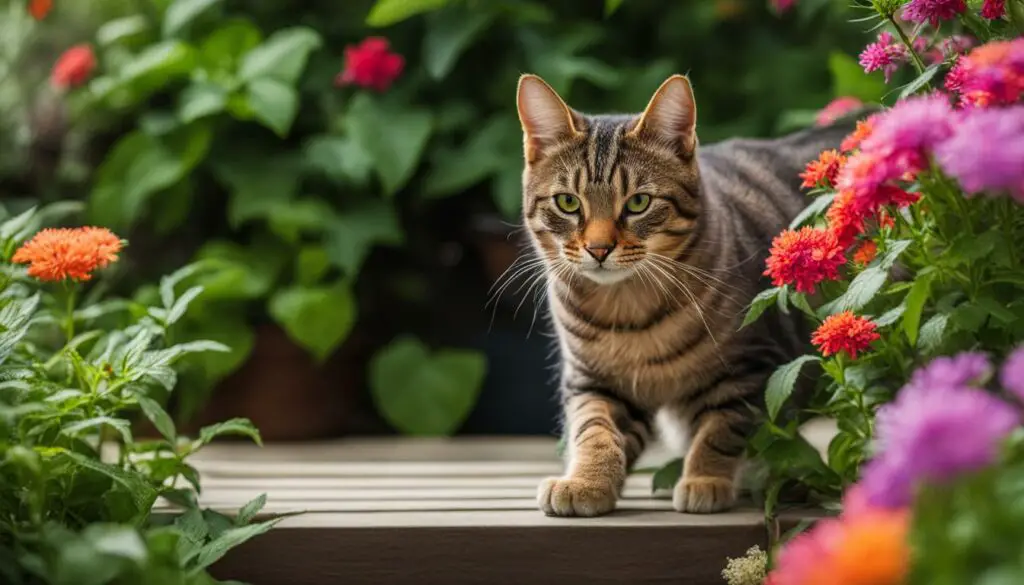
Cats Accepting You as Family
When cats lick their owners’ faces, it can be a strong indication that they consider you a part of their family. This behavior is rooted in their instinct to groom and care for their loved ones, both feline and human. By licking your face, your cat is showing acceptance and a desire to strengthen the bond between you.
Just like how cats groom each other as a way to establish social connections, they extend this behavior to their human companions as a sign of love and trust. It’s their way of saying, “You are one of us.” So, if your cat is showering you with face licks, consider it a joyful expression of their affection.
As a cat owner, it’s important to understand and appreciate this behavior. It allows you to connect with your furry friend on a deeper level and reinforces the bond you share. Embrace these face licks as a heartfelt gesture from your feline companion, and reciprocate their love and care in return.
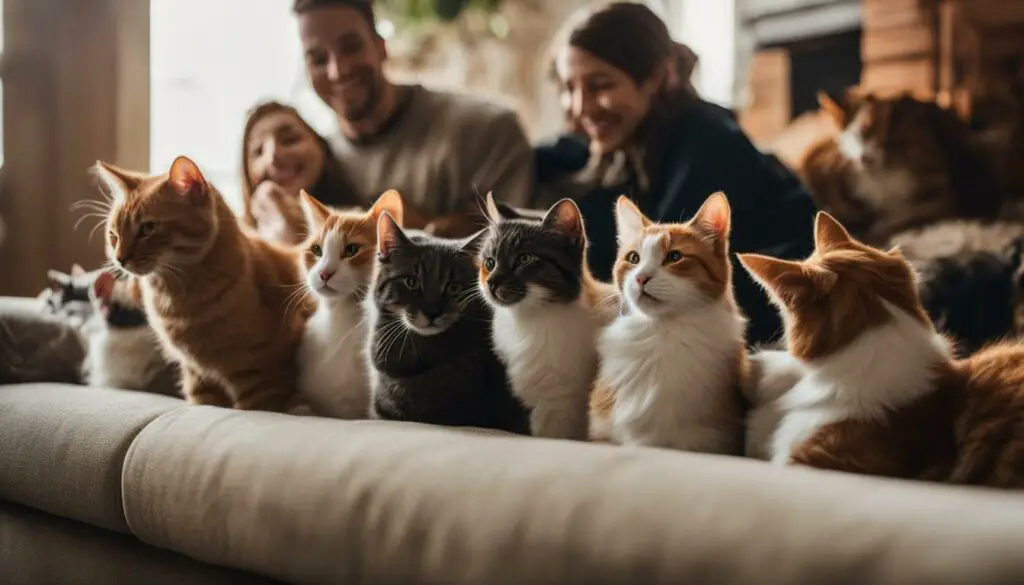
| Reasons why cats lick their owners’ faces |
|---|
| Showing affection and love |
| Imitating grooming behavior |
| Marking territory and ownership |
| Seeking attention and interaction |
Conclusion
In summary, cat licking behavior, whether it’s licking paws or faces, is a normal part of feline grooming and communication. Cats use licking as a way to keep themselves clean, mark their territory, and show affection towards their owners.
While occasional licking is not a cause for concern, excessive licking can indicate underlying health issues or stress. It’s important for cat owners to pay attention to their cat’s licking habits and seek veterinary attention if necessary.
By understanding the reasons behind cat licking behavior, owners can provide appropriate care and ensure their cat’s well-being. Regular grooming, parasite prevention, and creating a stress-free environment are essential in maintaining a healthy and happy cat.
FAQ
Why is my cat licking its paws a lot?
Cats lick their paws as a normal grooming behavior. However, excessive licking can be a sign of an underlying issue that requires attention.
Is it normal for my cat to lick?
Yes, cats licking themselves is a natural instinct for cleaning and grooming. It’s a way for them to eliminate dirt, debris, and odors.
What is normal vs. excessive licking?
Normal licking is even and not overly focused on a specific area. Excessive licking can be a sign of anxiety, stress, or underlying health issues.
Should I go to the vet for a cat that licks too much?
If your cat is obsessively licking its paws, it’s recommended to visit a veterinarian. They can evaluate your cat’s behavior and health to determine the underlying cause.
Why is my cat losing fur?
Cats can lose fur for various reasons, including normal shedding, stress, allergies, parasites, and underlying health conditions.
Decoding your cat’s coat: Normal shedding vs. red flags?
Shedding is a natural process for cats, especially during seasonal changes. Excessive shedding, patchiness, and bald spots can indicate potential health problems or allergies.
How does stress affect my cat’s fur?
Stress can lead to fur loss in cats due to increased grooming or over-grooming. Managing stress through creating safe spaces and maintaining a consistent routine can help reduce fur loss caused by stress.
Can allergies cause my cat to lose fur?
Yes, allergies, such as food allergies or flea allergies, can cause excessive scratching and fur loss in cats. Identifying the allergen and implementing appropriate treatments can help manage allergies and reduce fur loss.
How do parasites affect my cat’s fur?
Parasites like fleas, ticks, and mites can cause itching, inflammation, and fur loss in cats. Regular parasite prevention can help minimize the risk and impact of parasite infestations.
Are there health conditions that cause cat fur loss?
Certain health conditions, such as hyperthyroidism, ringworm, hormonal imbalances, and bacterial infections, can contribute to cat fur loss. It’s essential to consult a veterinarian for proper diagnosis and treatment.
Why does my cat lick my face?
Cats may lick their owners’ faces as a way to seek attention, show affection, mark territory, or include them in their family unit.
Does my cat lick my face to seek attention?
Yes, cats may lick their owners’ faces as a way to seek attention or show their need for affection.
Why do cats lick their owners’ faces out of affection?
Licking is a way for cats to show affection and bond with their owners. Cats may lick their owners’ faces as a sign of love and acceptance.
Do cats mark their owners’ faces by licking?
Cats have scent glands on their faces, and they may mark their owners’ faces by rubbing and licking them as a way to communicate ownership and mark territory.
Why do cats consider their owners as family and lick their faces?
Cats may lick their owners’ faces as a way to include them in their family unit. This behavior is rooted in their instinct to groom and care for their family members, including humans.

